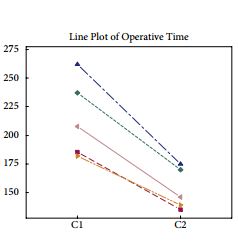Article of the Week: Learning curves for urological procedures – a systematic review
Every week the Editor-in-Chief selects the Article of the Week from the current issue of BJUI. The abstract is reproduced below and you can click on the button to read the full article, which is freely available to all readers for at least 30 days from the time of this post.
In addition to the article itself, there is an accompanying editorial written by a prominent member of the urological community. This blog is intended to provoke comment and discussion and we invite you to use the comment tools at the bottom of each post to join the conversation.
If you only have time to read one article this week, it should be this one.
Learning curves for urological procedures: a systematic review
Hamid Abboudi, Mohammed Shamim Khan, Khurshid A. Guru*, Saied Froghi†, Gunter de Win‡, Hendrik Van Poppel§, Prokar Dasgupta and Kamran Ahmed
MRC Centre for Transplantation, King’s College London, King’s Health Partners, Department of Urology, Guy’s Hospital, London, UK, *Roswell Park Cancer Institute, Buffalo, NY, USA, †The Oxford Cancer Centre, Oxford University, Churchill Hospital, Oxford, UK, ‡Department of Urology, University Hospital Antwerp, Antwerp, Belgium, and §Department of Urology, University Hospital, KU Leuven, Leuven, Belgium
OBJECTIVE
- To determine the number of cases a urological surgeon must complete to achieve proficiency for various urological procedures.
PATIENT AND METHODS
- The MEDLINE, EMBASE and PsycINFO databases were systematically searched for studies published up to December 2011.
- Studies pertaining to learning curves of urological procedures were included.
- Two reviewers independently identified potentially relevant articles.
- Procedure name, statistical analysis, procedure setting, number of participants, outcomes and learning curves were analysed.
RESULTS
- Forty-four studies described the learning curve for different urological procedures.
- The learning curve for open radical prostatectomy ranged from 250 to 1000 cases and for laparoscopic radical prostatectomy from 200 to 750 cases.
- The learning curve for robot-assisted laparoscopic prostatectomy (RALP) has been reported to be 40 procedures as a minimum number.
- Robot-assisted radical cystectomy has a documented learning curve of 16–30 cases, depending on which outcome variable is measured.
- Irrespective of previous laparoscopic experience, there is a significant reduction in operating time (P = 0.008), estimated blood loss (P = 0.008) and complication rates (P = 0.042) after 100 RALPs.
CONCLUSIONS
- The available literature can act as a guide to the learning curves of trainee urologists. Although the learning curve may vary among individual surgeons, a consensus should exist for the minimum number of cases to achieve proficiency.
- The complexities associated with defining procedural competence are vast.
- The majority of learning curve trials have focused on the latest surgical techniques and there is a paucity of data pertaining to basic urological procedures.



